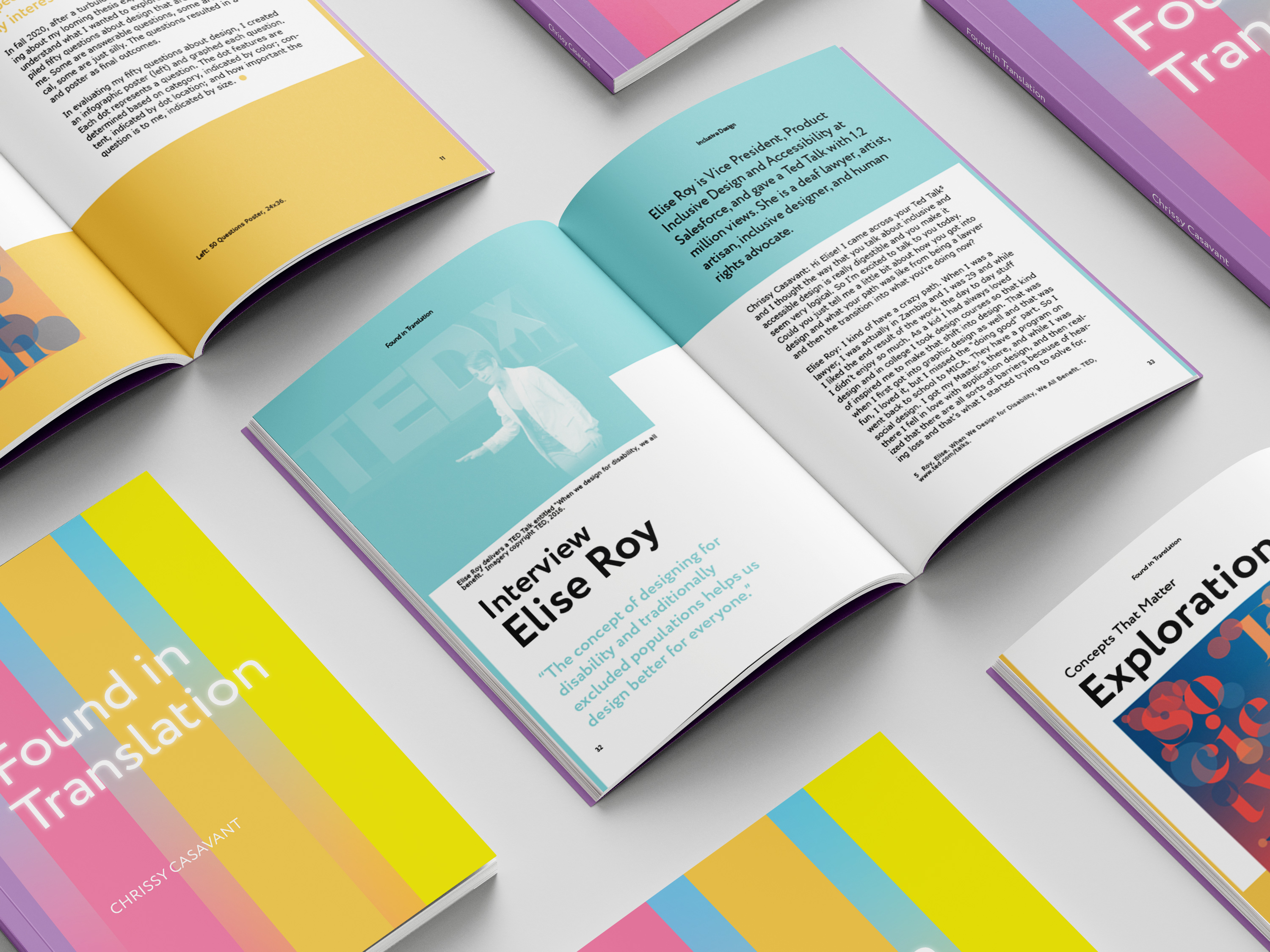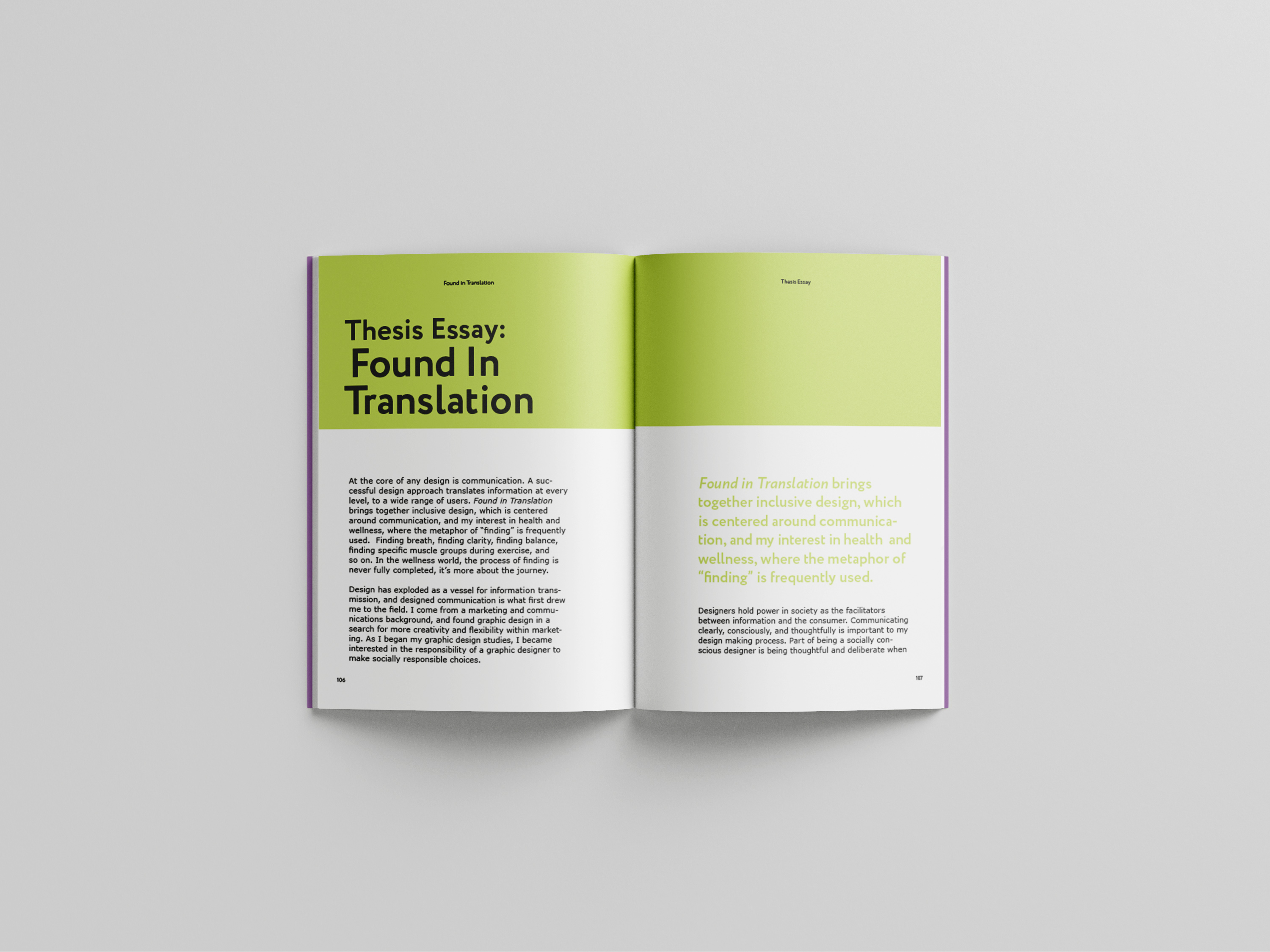Found in Translation: MFA Thesis
At the core of design is communication. Communicating clearly, consciously, and thoughtfully is important to my design-making process. Part of being a socially conscious designer is being thoughtful and deliberate when making design choices. I’m curious about how design can solve human problems. One of the problems facing the design world today is inaccessible and exclusive design. My thesis work aims to explore inclusive design, expand the definition of accessible design, and reach other designers who are also interested in making inclusive work.
Inclusive design can improve quality of life and access to information for a wide range of users, and it can create impactful social change. I’m interested in exploring both digital and physical inclusive design, as they each have the capability to reach different audiences. Analog design has staying power, while digital design offers adaptability. Both are important for a designer such as myself to understand.
Inclusive design can improve quality of life and access to information for a wide range of users, and it can create impactful social change. I’m interested in exploring both digital and physical inclusive design, as they each have the capability to reach different audiences. Analog design has staying power, while digital design offers adaptability. Both are important for a designer such as myself to understand.
I’m particularly interested in using inclusive design in the context of health and wellness tools and organizations. I think there’s a need for wellness design in the design community, the wellness community, and society as a whole.
In my research, I hope to expand my own understanding of inclusive design across varying industries and environments. I also want to pass this knowledge on to other students and designers. Inclusive design isn’t as thoroughly taught in design schools as it could be, and I’d like to help change that. Making work more usable to people of different ages, abilities, cultures, and socioeconomic statuses benefits everyone: the client’s message gets distributed further, the user can access more information, and the designer’s work is successfully communicated.
View the publication on Issuu here.
In my research, I hope to expand my own understanding of inclusive design across varying industries and environments. I also want to pass this knowledge on to other students and designers. Inclusive design isn’t as thoroughly taught in design schools as it could be, and I’d like to help change that. Making work more usable to people of different ages, abilities, cultures, and socioeconomic statuses benefits everyone: the client’s message gets distributed further, the user can access more information, and the designer’s work is successfully communicated.
View the publication on Issuu here.



